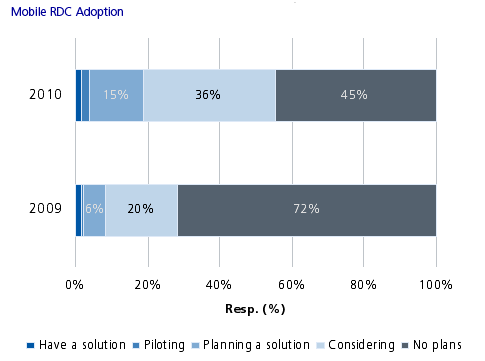The Future of Consumer RDC: Going Mainstream
Abstract
RDC has been a treasury management product offered by financial institutions in exchange for fee revenue. But competitive pressures, growth in self-service channel preferences, and relentless cost reduction demands are vaulting RDC into the consumer mainstream.
Until recently, remote deposit capture (RDC) has been limited to business clients. The past year has seen several hundred financial institutions offer consumer capture using devices they already have, thus eliminating the cost of providing and supporting scanners. RDC thus becomes a viable self-service deposit channel—that is, for consumers with a scanner, a demographic that excludes most US households. What then?
Mobile RDC invites the use of smart phones, either for check image capture alone or as part of a broader mobile banking solution. Both mechanisms will soon be broadly offered by financial institutions and widely used by consumers.
According to a new report featuring results of a Celent survey, The Future of Consumer RDC: Going Mainstream, the number of US financial institutions planning to offer mobile RDC has doubled over the past year. Celent expects interest in mobile RDC to continue to grow because banks face a challenging revenue outlook and mounting cost pressures in the retail channel.

“The real challenge with self-service deposits may be the transformation required as transactions move out of the branch,” says Bob Meara, Senior Analyst with Celent’s Banking Group and author of the report.
“Self-service deposits are at odds with the pervasive cross-selling culture at most banks. Reduced branch traffic presents a sales challenge, but deposit-related foot traffic comes at a significant cost—one that US banks may no longer be able to afford,” he adds. “Mobile RDC may be the best idea yet to hasten the branch transformation we all know to be inevitable.”
Leveraging self-service channels is an established strategy, but not in the realm of check deposits. With consumer RDC, financial institutions have a means to dramatically reduce transactional activity in their branch networks. In addition to looking at adoption motives and barriers, this report analyzes financial institution responses to the FFIEC Guidance on RDC Risk, the consumer RDC solution provider landscape, and risk mitigation tools. The report draws from a survey of 12 solution providers and an online survey that drew responses from 246 financial institutions.

